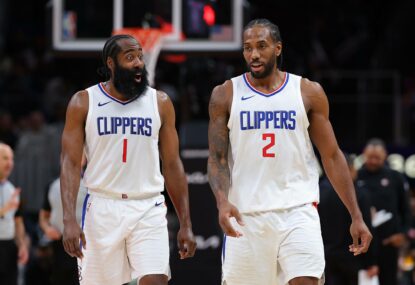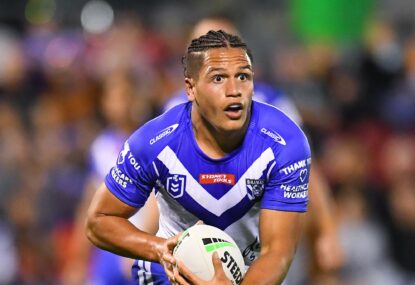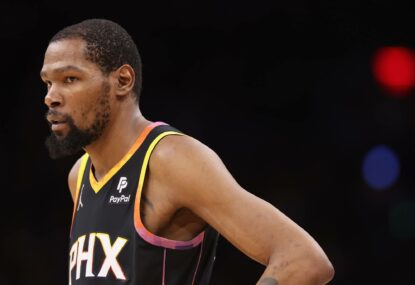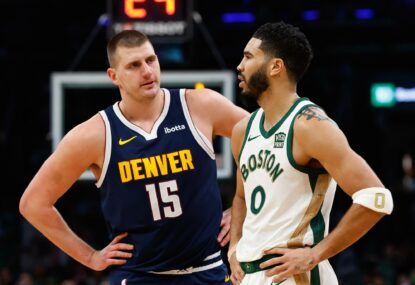The regular season has been played. The finals are done and dusted. The championship trophy has been taken to South Beach. All eyes now turn to the 2012 NBA Draft.
Two rounds. Sixty selections.
This year’s draft is viewed as one with solid depth and with only one standout player. Anthony Davis is a franchise player. He is a premiere shot blocker and rebounder, very athletic, can face up and hit a jumper to the three-point line. He is very unselfish, has high character and is very-very-very team oriented.
Charlotte has the second pick. They’re in a major rebuilding phase and with their pick there is no clear-cut favourite. They need to draft a guy who will be in the line-up for the next ten years. With the second pick, the Bobcats and Michael Jordan can miss and miss big.
Not one position on the roster in Charlotte is a lock, unlike Washington or Cleveland.
So who will go number two? Bradley Beal, Tyler Zeller, T-Robinson? Thomas Robinson has the hustle, energy and still has some improvement in him. Michael Kidd-Gilchrist is a tough and tenacious player with upside but has liabilities at the offensive end.
The mistake would be to select Andre Drummond. They should go with Robinson. He led the nation with 27 double-doubles and is a David West type of player and works his tail off.
He will have a solid NBA career.
There is so much that goes into draft day, so let’s take a look at the elements including what it means when you hear the term ‘the promise.’
Hindsight is a great thing.
You don’t know that a guy is going to be great until he steps onto the floor.
In the ’85 draft, the Atlanta Hawks selected the 7’0” centre from Southern Methodist University Jon Koncak. The Hawks needed a big body and they got just that.
However, Mike Fratello, who coached the Hawks for seven seasons, revealed this recently:
“One guy on the board was keen on another kid by the name of Karl Malone”.
I’ll spare Jon the embarrassment by not listing any stats.
How about the preceding year? The Portland Trail Blazers used their second overall pick on Sam Bowie. They based their selection on team need rather than talent. If talent was the prerequisite, Michael Jordan would’ve been their man (the Blazers drafted Clyde Drexler in ’83).
When the Philadelphia 76ers went to the ’98 draft they had one task in mind: to get a guard with the defensive abilities to support their all-star Allen Iverson. The 76ers drafted Larry Hughes. They overlooked Dirk Nowitzki and Paul Pierce.
Hindsight.
And now for a lesson in draft terminology.
Red flag:
You’ll generally hear those two words when a player is said or perceived to have character flaws and/or when health issues come into play. A player that attracts the phrase will most likely drop in the draft or may not even get picked-up by a team. In 2012, Jared Sullinger out of Ohio State has been red flagged due to a back problems.
Five star:
This is a top-level prospect. The player will be durable, possess excellent character, has won or had success at a high level and is seen to be a future NBA all-star. Think Tim Duncan.
Smoke screen:
Want to influence the draft? Use the smoke screen card. Say one thing yet mean another. Mention a players name to a journalist and then sit back and watch the story spread. This is much harder to do now due to the saturation of media, but is still possible.
The promise:
A guy suddenly stops working out and doesn’t attend any other teams’ facilities. What does this mean? When this happens, a team will make a promise to a player and his agent that if they agree to not work out with others, then they would select that player if still on the board when their pick comes up. This year, Royce White out of Iowa State cancelled the remainder of his workouts and has gone silent. The Boston Celtics are believed to have made a promise to him. Watch out on draft day.
Draft dynamics
Let’s take a look at the dynamics between the main three: the general manager, the coach and the scout. The coach is focused on winning today while the general manager is focussed on the next ten years. The third party is the scout – the guy on the road who has the job of watching the college players. The scout must acquire as much information for the draft as he can. As the season rolls on, he will speak with the general manager about what the team needs and then narrow the search. Throughout the season, the scout will go and forth until that final moment when the selection is made. All three must have an effective relationship and all need to understand each other’s role.
The general manager:
Two to three weeks prior to the draft, the general manager will review the tape, attend pre-draft camps, call college coaches and contacts within his network, speak with other general managers in the NBA about trades, talk to medical staff etc. In short, he needs to get all the information and be ready.
The head coach:
This is the guy with a lot of catching up to do. The coach has been focused on the team all season with no time to watch college games. He will attend pre-draft camps, read all reports on prospects, watch video and workouts, make phone calls and conduct personal interviews with prospects.
The scout:
He will attend pre-draft camps, conduct film study, attend practices and college games, perform background work on and off the court, make player and draft projections and get all the information to the general manager.
All three will need to adhere to this statement: do you homework, then do it again and then go with your gut.
Needs versus talent?
They team must answer the question: are we drafting for a certain spot we need in particular due to a trade or retirement, or are we drafting for talent?
The teams will rank players by positions on one board and rank prospects by best player available on another.
Draft night
The teams on draft night meet and set up, generally in the player’s locker room. This is commonly referred to as the ‘war room.’
The general manager sets the tone for the room. He, the lead owner, the coaches, the scout and a PR person will be in the room.
One phone call can change the night and the feeling in the room – for example, the call may be a trade opportunity – you don’t have long to make the call because the time is ticking and a selection must be made.
There are two rounds with two minutes between each selection. We generally don’t see many surprises in the first round. Round two is where the scouts earn their money. It is where teams draft for what they really need – a big player, a shooter etc. This is where the homework hopefully pays off.
So what when the draft ends?
If all teams make their selections, there will be 60 players with new teams. Many though will not hear their name called out by the commissioner and deputy commissioner. The scout and general manager meet and discuss the prospects and start making calls to those prospects agents about summer camp lists. They’re now free agents.
Thanks for attending NBA draft 101… now over to you, David Stern.


































































































